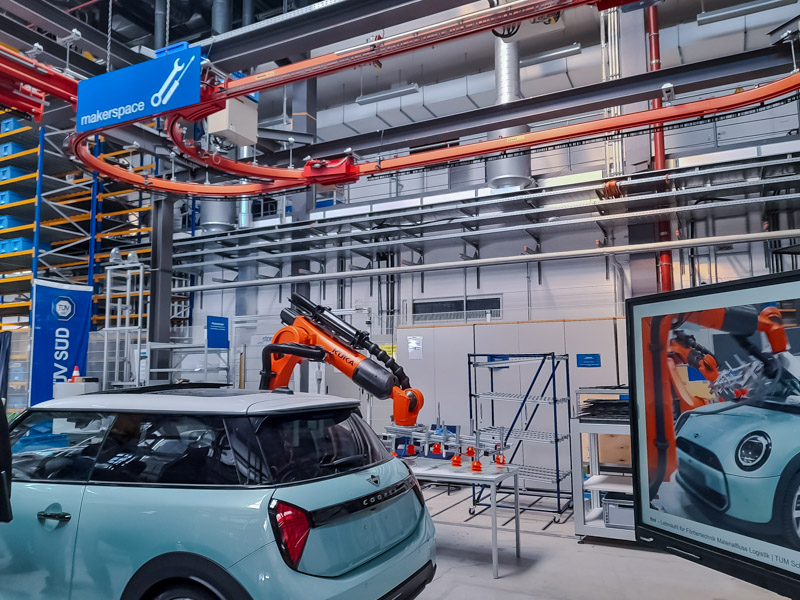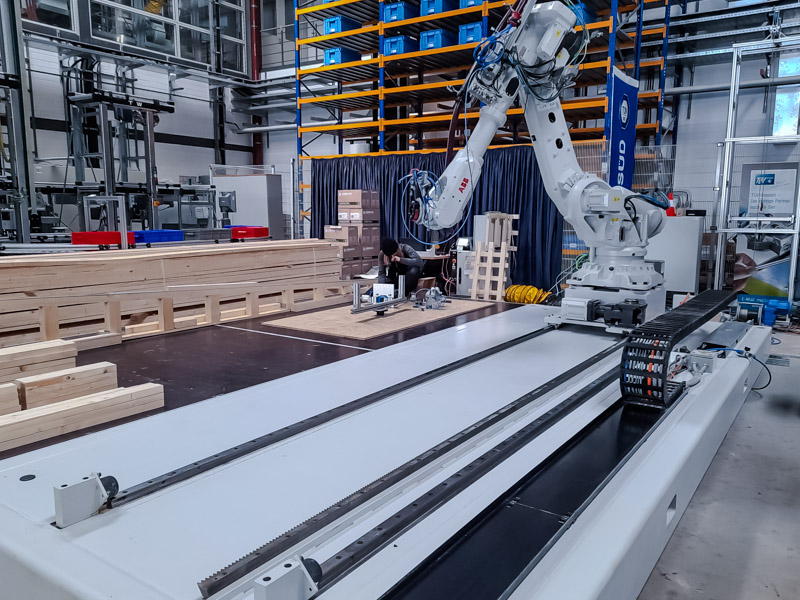The congress brought together companies, academic institutions and industry experts to explore the latest developments, innovations and future strategies in intralogistics. It focused on key issues: How can flexibility, intelligence and sustainability be seamlessly integrated into logistics processes? And which technologies will play a central role in the future? The following topics and insights from the expert lectures and discussions were of particular interest:
The importance of AI in logistics
One of the key takeaways from the congress was the increasing relevance of artificial intelligence (AI) for the logistics sector. A recent Bitkom study revealed that 17% of companies are already actively using AI, with another 40% planning to implement it in the near future. Figures are particularly high in fields like IT and robotics.
Professor Michael ten Hompel: The future of AI
Professor ten Hompel, former director of the Fraunhofer IML, talked in his lecture about the profound transformation that artificial intelligence is set to bring in the coming years. He presented a model outlining five distinct stages of AI development. The current stage is particularly fascinating: AI is beginning to exhibit emergent abilities – skills that are not programmed into the AI model but which develop through learning and adaptation, such as the ability to automatically deliver lectures in multiple different languages.
“f you want to go fast, go alone. If you want to go far, go together”

Interesting facts from the lecture:
- 123,000 Autonomous Mobile Robots (AMRs) were sold alone in 2023.
- Professor ten Hempel made a strong case for open source solutions and among the initiatives he presented was the “Open Logistics Foundation”, an agent-based operating system for intralogistics.
- He also quoted the following African proverb, which resonated with many of the attendees: If you want to go fast, go alone. If you want to go far, go together.“
KI models and simulation
Ein weiteres spannendes Thema war das Sprachmodell Teuken-7B, das speziell für europäische Sprachen entwickelt wurde und einen Fokus auf Logistik-Anwendungen legt. Laut Experten ist es sogar präziser als bekannte Modelle wie Llama oder Mistral. Auch Simulationen gewinnen an Bedeutung – vor allem in der Robotik. Sie ermöglichen es, Algorithmen risikofrei zu trainieren und zu optimieren, bevor diese in der Praxis eingesetzt werden.
Yan Rudall, Director Robotics & Machine Learning, KION Group: Partnerships and automation
The KION Group pursues a structured automation approach, working with NVIDIA and Accenture to drive transformation in intralogistics:
- Automation of manual forklifts
- Flexible automation design
- Simulation and continuous optimization using digital twins
A particularly fascinating aspect is the use of AI and cameras in collision avoidance. AI can also determine whether a load should be handled by a human or an autonomous forklift.

Dr. Stephan Peters, CEO of Rhenus Logistics: Challenges and strategies
Rhenus has so far taken a pragmatic approach to automation, allowing a flexible response to customer requirements. A strategic move was the acquisition of Setlog, a provider of supply chain management software. Financing cloud-based solutions continues to pose a significant challenge, however, as not all companies possess the necessary resources.
Brownfield operations: Optimization of existing systems
An interesting concept known as the brownfield approach was presented, focusing on the phased modernization of existing processes while live operations continue uninterrupted. This approach enables efficiency gains without disrupting workflows.
Sensors and real-time data
Sensor technology is becoming increasingly prevalent in intralogistics – especially for preventing overproduction and mitigating safety risks. A practical example is the use of small cards with integrated chips that transmit real-time data directly to the ERP system. This allows for more efficient inventory management and return logistics, resulting in significant cost savings.
Adaptive safety for AMRs
Modern autonomous mobile robots (AMRs) are becoming increasingly intelligent. They adapt dynamically to their surroundings, automatically reducing speed or even stopping when there are people nearby, for instance. This enhances safety in the warehouse while simultaneously improving material flow.

Voice assistants in logistics
One particularly forward-looking development is the use of AI-powered voice assistants in warehouse logistics. Unlike traditional pick-by-voice systems, these advanced assistants can process more complex instructions with greater precision. At the same time, tests show that scanner systems continue to be highly efficient. A hybrid solution for the future may feature an intelligent combination of voice assistants, scanners and smart glasses.
Conclusion: The future of logistics is digital and AI-driven
The Material Flow Congress 2025 highlighted the profound impact of artificial intelligence, automation and digital twin technologies on the logistics industry – and the vast opportunities presented by this evolution. It’s a dynamic time for innovation. The challenge now lies in strategically integrating these technologies and leveraging them effectively to gain a competitive edge.
“Be bold – there has never been a better time to invest in future technologies.”



